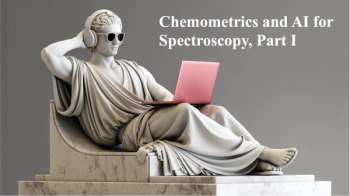
- Application Notebook-09-01-2013
- Volume 28
- Issue 9
Ultra-Low Sulfur in Automotive Fuels
Globally, the permitted sulfur limit in fuel oils has been decreased to 10 ppm in many countries and regions.
Globally, the permitted sulfur limit in fuel oils has been decreased to 10 ppm in many countries and regions. For compliance verification, X-ray fluorescence (XRF) spectrometry is the definitive analysis tool for use at distribution terminal and refineries, as well as mobile or stationary testing laboratories
Rigaku Micro-Z ULS is a benchtop wavelength dispersive X-ray fluorescence (WDXRF) spectrometer with fixed optics optimized for sulfur analysis. The atmosphere in the optics path of the Micro-Z ULS is a vacuum so that helium gas is not required. The spectrometer is designed to minimize the restrictions in installation such as cooling water, special power supply, installation space, etc.
Experimental Conditions
Micro-Z ULS is equipped with an air-cooled 40 W Cr-target X-ray tube and a doubly curved RX-9 analyzing crystal optimized for low concentration sulfur. The counting time was 300 s for peak and background measurements. 4.0 mL of each diesel fuel sample was poured into a liquid XRF cup (inner diameter 35 mm) equipped with 2.5 μm Mylar® film.
Figure 1: Calibration results for diesel fuel.
Results
Repeatability tests were carried out using a representative sample. For each, two aliquots were prepared and analyzed using the calibration shown in Figure 1; this process was repeated 20 times. The test results are tabulated in Table I for diesel fuel, in which the average and the difference of two aliquots are shown respectively. Lower-limit-of detection (LLD) was calculated as 0.3 ppm sulfur.
Table I: Repeatibility results for diesel fuel
Conclusion
Low concentration sulfur in petroleum-based fuel can be routinely analyzed with high accuracy and precision with the Micro-Z ULS, a benchtop WDXRF spectrometer with fixed optics, which does not require He gas, external water supply or special power supply. This application note demonstrates that the performance of the Micro-Z ULS meets the requirements of ASTM D2622-10.
Rigaku Corporation
9009 New Trails Drive, The Woodlands, TX 77381
tel. (281) 362-2300, fax 281-364-3628
Website:
Articles in this issue
over 12 years ago
Direct Mercury Analysis of Gaseous Samples Using Sorbent Tubesover 12 years ago
Specular Reflectance Spectroscopy with Viewingover 12 years ago
Elemental Analysis Through a Plastic Barrierover 12 years ago
Wire Grid Polarizers for IR Spectroscopyover 12 years ago
Improving Trace Metals Data Quality Through In-Lab Acid PurificationNewsletter
Get essential updates on the latest spectroscopy technologies, regulatory standards, and best practices—subscribe today to Spectroscopy.





